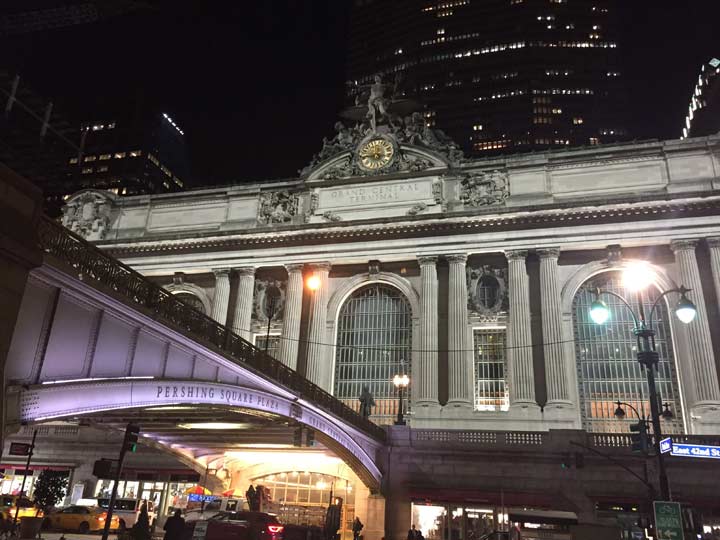
Never in my life have I ever heard, “meet me at Pershing Square.” As a rule when I am meeting up with people in this part of town, we usually meet at the iconic clock in the center of the vast marble floor at the center of Grand Central Terminal, shown here. Nonetheless the section of East 42nd Street that is overshadowed by the Park Avenue Viaduct, and formerly intersected by Park Avenue itself (between 41st and 42nd, Park Avenue is now a pedestrian passageway) is officially known as Pershing Square, the name emblazoned on the iron bridge that crosses East 42nd.
General John Joseph Pershing (1860-1948) was the leader of the American Expeditionary Force in Europe when America entered WWI in 1917. Previously he had served in the so-called Indian Wars, fighting the Apache and the Sioux from 1886-1890; he served in the Spanish-American War in Cuba in 1898 and later in the Philippines in 1903 after which President Roosevelt elevated him to brigadier general; he fought revolutionary Pancho Villa when he raided the American Southwest in 1916; and the Germans in WWI. It can perhaps be said that he led troops on more continents and against a greater array of opponents than any other previous American commander.
When the Park Avenue Viaduct was constructed in 1919, the name of the still-relatively young Pershing was bestowed on its crossing over East 42nd Street.

Pershing Square was originally going to be a public park, but obviously it never happened. See Ephemeral New York for details.
Check out the ForgottenBook, take a look at the gift shop, and as always, “comment…as you see fit.”
4/25/18

3 comments
He is special. Asia, Central America, Caribbean, Europe, North America…he was the last of the dying breed of Native American fighters
The next closest would be Douglas MacArthur but he only fought in Central America, Europe, and Asia. He didn’t get the luxury of fighting in the US unless you count action taken against civilians camped in Washington…others would be special operations personnel whose activities are likely to be highly classified making knowing what they did impossible.
The Third Avenue El, opened in 1878, originally had a spur along 42nd Street as far west as Park Avenue. It dead-ended outside of Grand Central Terminal. It was removed in 1923, shortly after the viaduct was opened.
That postcard image bears an uncanny resemblance to Pershing Square in downtown Los Angeles:
http://farm5.staticflickr.com/4006/4433840831_b3250abfc9_z.jpg?zz=1